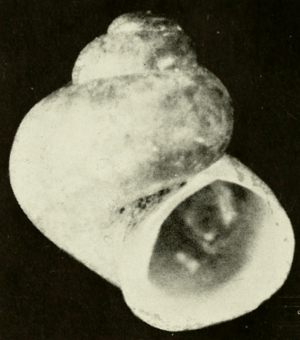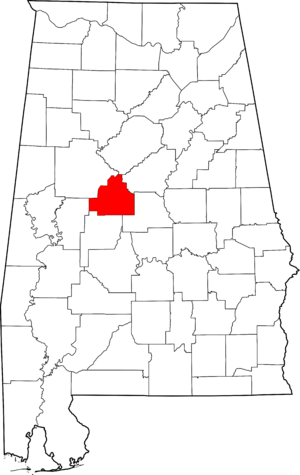Cahaba pebblesnail facts for kids
Quick facts for kids Cahaba pebblesnail |
|
|---|---|
 |
|
| Black and white photo of apertural view of the shell of Clappia cahabensis | |
| Conservation status | |
| Scientific classification | |
| Genus: |
Clappia (gastropod)
|
| Species: |
cahabensis
|
The Cahaba pebblesnail, scientifically known as Clappia cahabensis, is a very small freshwater snail. It is a type of aquatic gastropod mollusk from the family Lithoglyphidae.
This special snail gets its name from the Cahaba River. It lives only in the United States, meaning it is endemic to this country.
For many years, people thought the Cahaba pebblesnail was extinct. It was even listed as extinct in the 2006 and 2010 IUCN Red List. Scientists believed it disappeared because of water pollution. This pollution came from activities like surface mining of coal in the USA.
Until recently, the Cahaba pebblesnail was believed to be gone forever. It was one of 34 snail species that suffered because of dams. These dams were built along the Coosa River between 1917 and 1967. However, in 2004, biologists made an exciting discovery. They found the snail alive! It was living in Alabama's Cahaba River, which is near the Coosa River.
What Does the Cahaba Pebblesnail Look Like?
The Cahaba pebblesnail was first described in 1965. An American scientist named William J. Clench studied it. He noted that its shell is small, usually about 3 millimeters long. That's about the size of a tiny ant!
The shell is smooth and yellowish-brown. It has about 3.5 whorls, which are the turns of the snail's shell. The opening of the shell, called the aperture, is almost round. The snail itself is white.
Where Does the Cahaba Pebblesnail Live?
The Cahaba pebblesnail's natural habitat is rivers. It needs parts of the river where the water flows very fast. These areas are often called river shoals.



